Classification of Triangles - Definition, Examples, Quiz, FAQ, Trivia
Learn to identify different types of triangles by sides and angles with easy explanations
What is Triangle Classification?
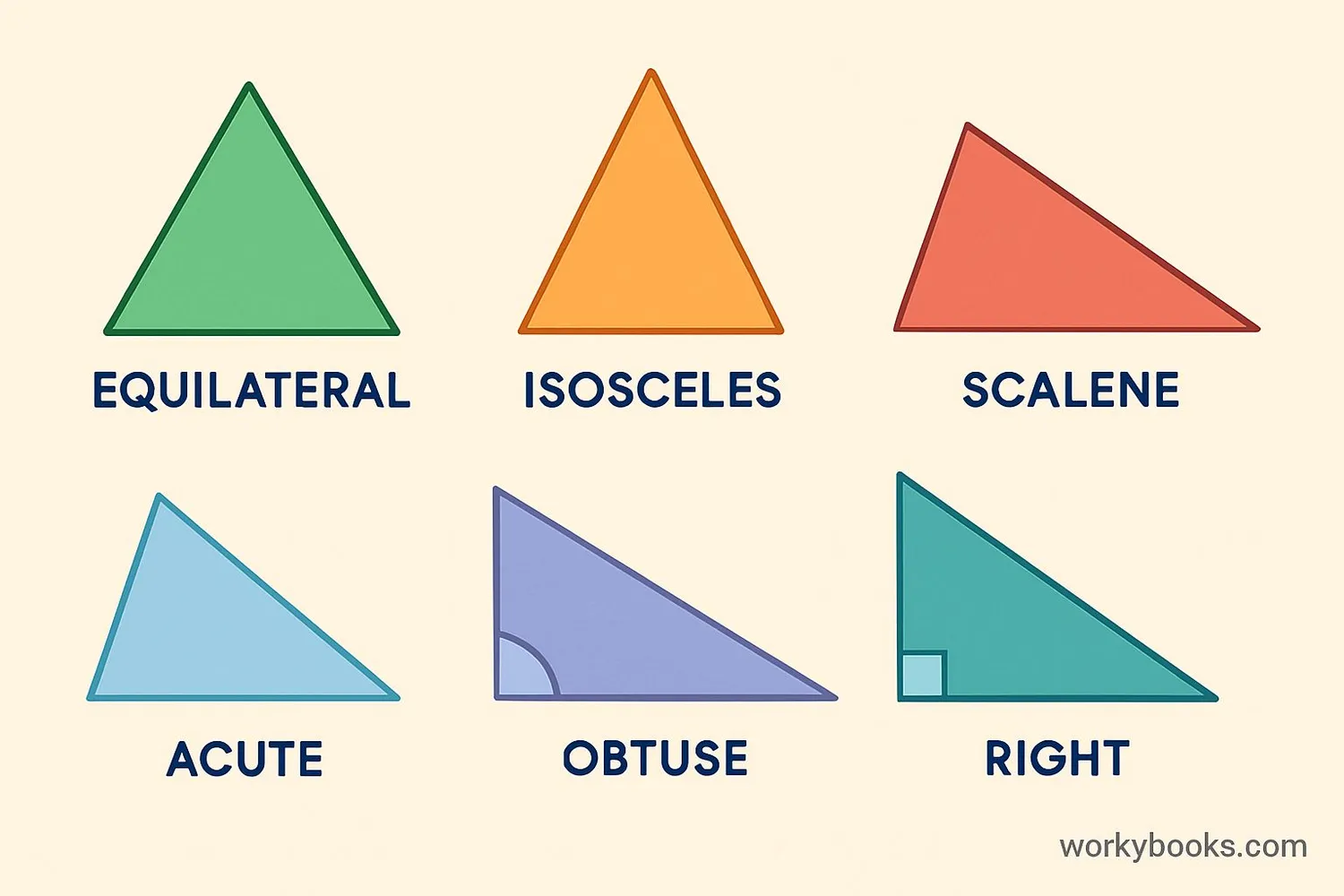
Triangles are three-sided polygons that come in different shapes and sizes. Classification means grouping triangles based on their properties. We classify triangles in two main ways:
1. By the lengths of their sides: This tells us if all sides are equal, two sides are equal, or all sides are different.
2. By the measures of their angles: This tells us if all angles are acute, one angle is right, or one angle is obtuse.
Understanding how to classify triangles helps us identify patterns, solve geometry problems, and understand how shapes work together. Every triangle can be classified in both ways at the same time!
Key Concept
All triangles have three sides and three angles that always add up to 180 degrees.
Classification by Sides
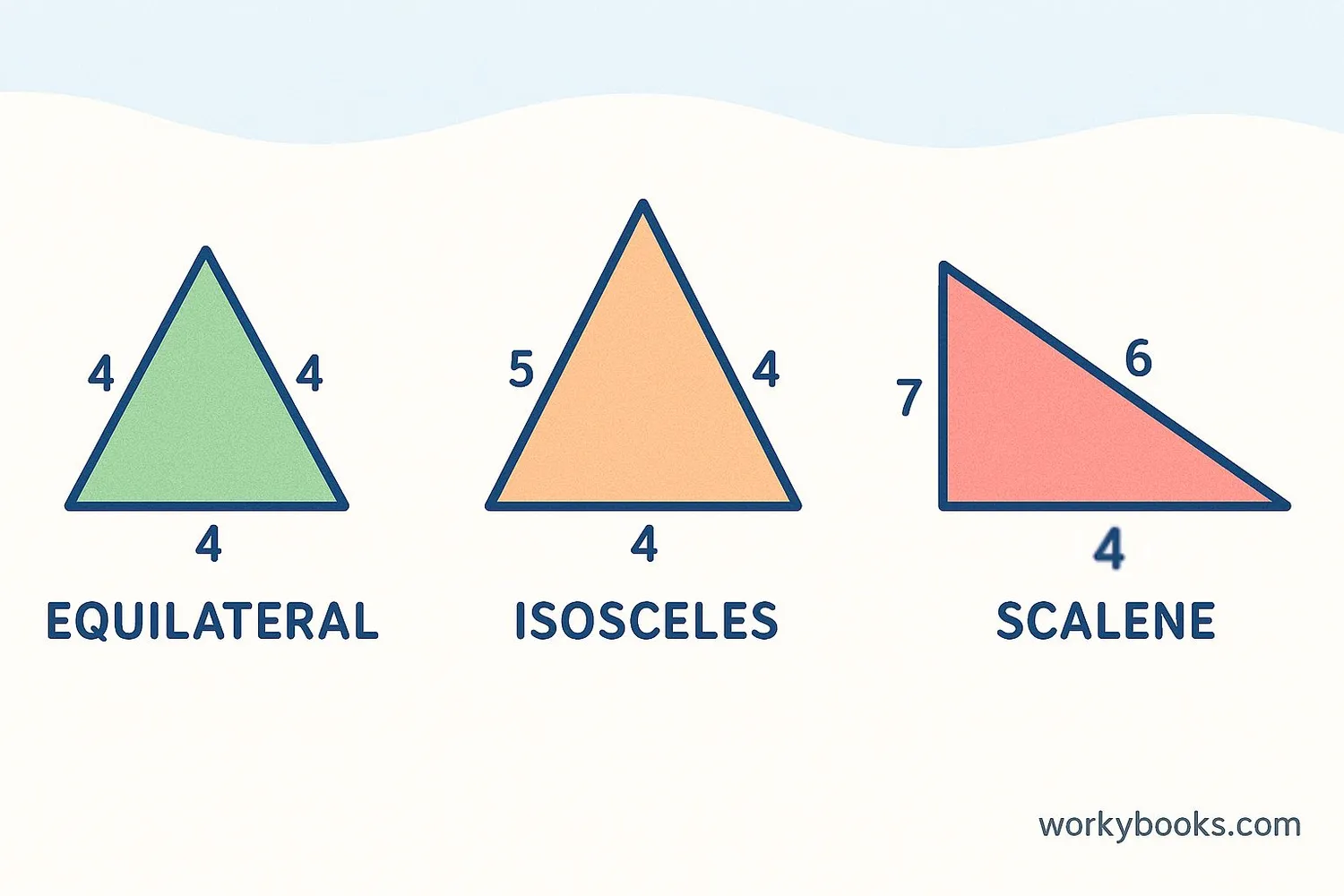
Equilateral Triangle
All three sides are equal in length. All three angles are equal (60° each).
Isosceles Triangle
Two sides are equal in length. The angles opposite the equal sides are also equal.
Scalene Triangle
All three sides have different lengths. All three angles have different measures.
To classify a triangle by its sides, we look at the lengths of its three sides:
Equilateral: All three sides are the same length. The word "equilateral" comes from Latin words meaning "equal" and "sides."
Isosceles: At least two sides are the same length. The word "isosceles" comes from Greek words meaning "equal" and "legs."
Scalene: All three sides have different lengths. The word "scalene" comes from a Greek word meaning "uneven."
Remember
An equilateral triangle is also isosceles, but not all isosceles triangles are equilateral.
Classification by Angles
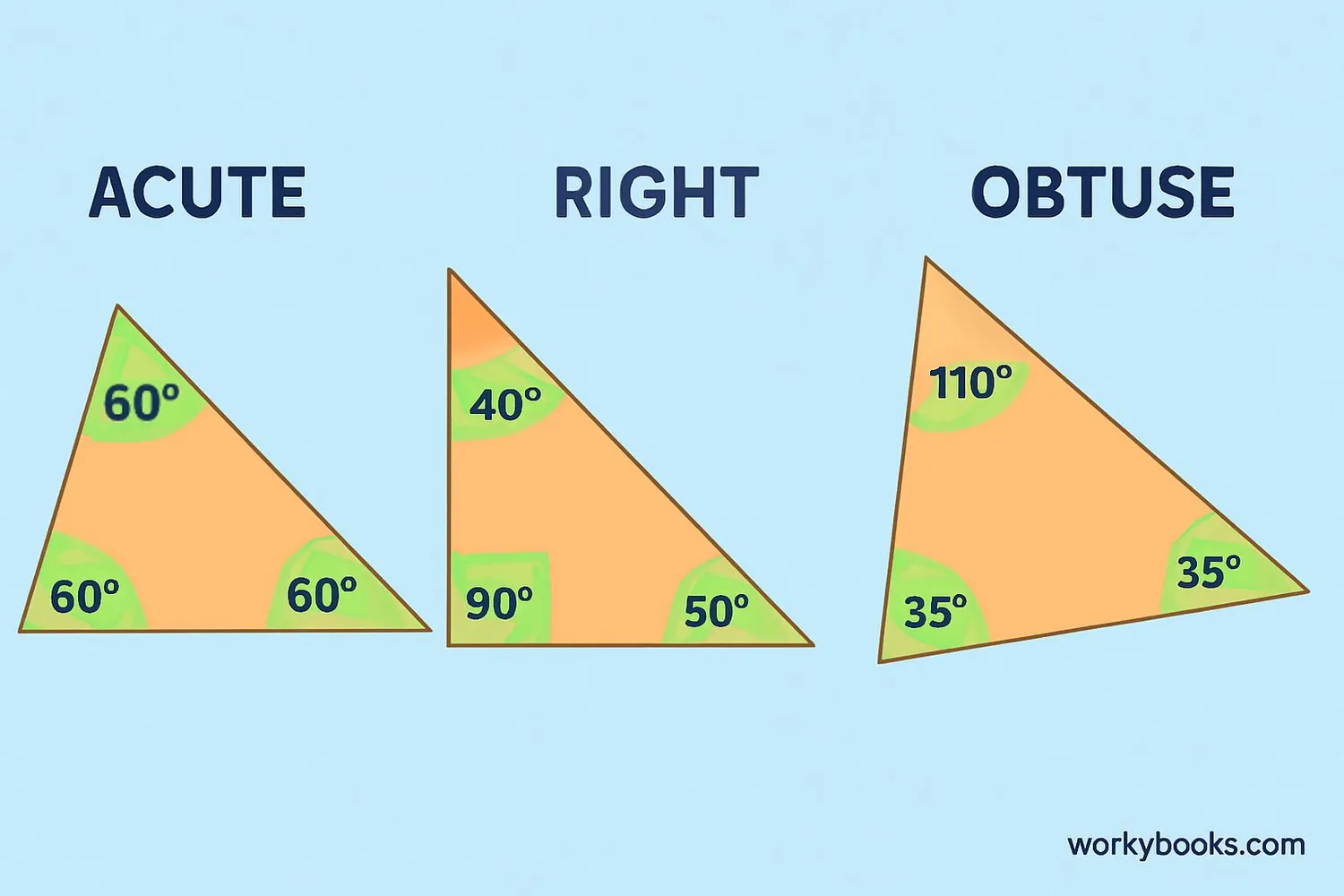
Acute Triangle
All three angles measure less than 90°. All angles are acute angles.
Right Triangle
One angle is exactly 90°. The sides forming the right angle are called legs.
Obtuse Triangle
One angle measures greater than 90°. The other two angles are acute.
To classify a triangle by its angles, we look at the measures of its three angles (which always add up to 180°):
Acute Triangle: All three angles are less than 90°. Each angle is an acute angle.
Right Triangle: One angle is exactly 90°. This is called a right angle and is often marked with a square symbol.
Obtuse Triangle: One angle is greater than 90°. This is called an obtuse angle.
Important Fact
A triangle can only have one right angle or one obtuse angle. Why? Because angles must add to 180°!
Combined Classification
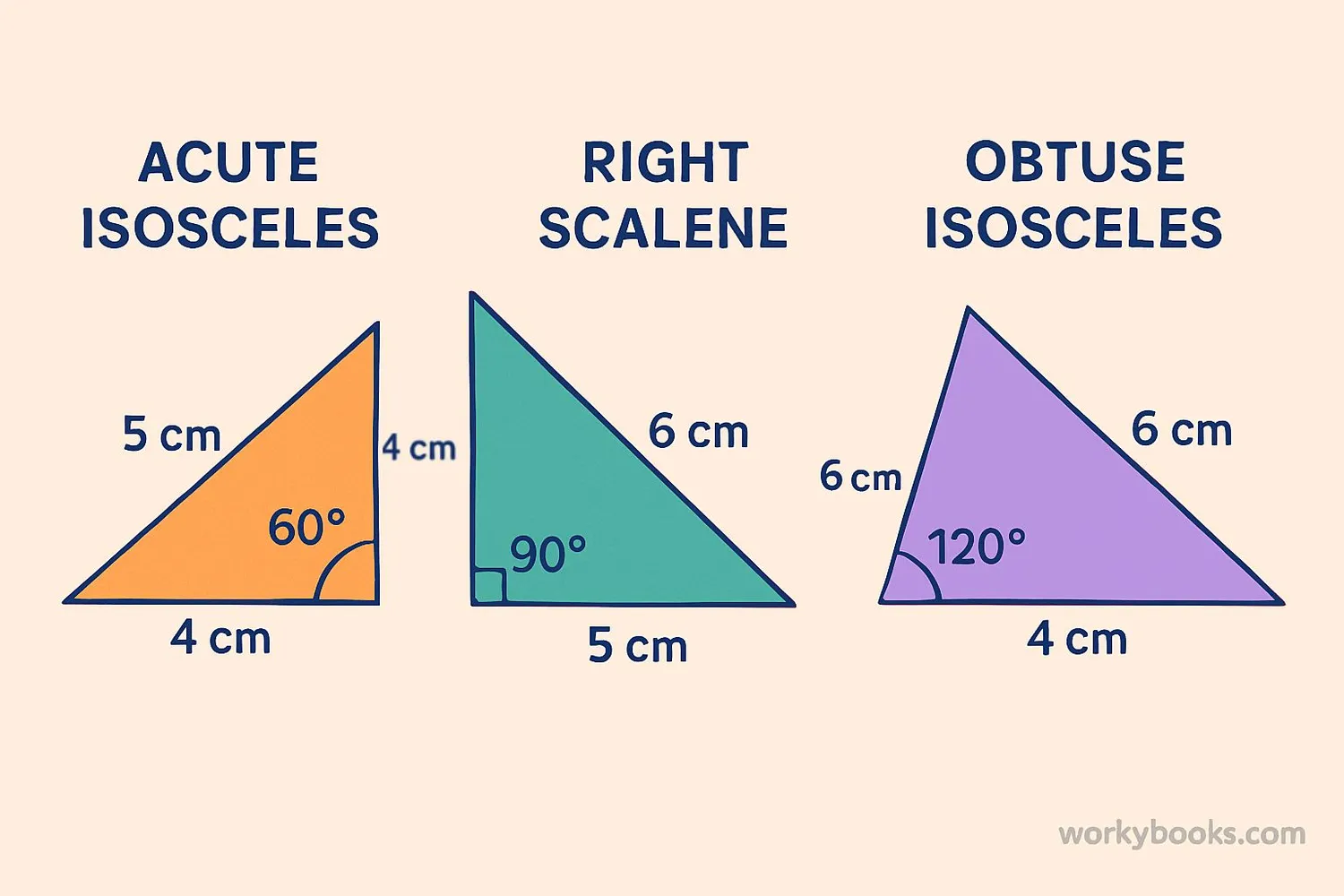
We can classify triangles using both methods at the same time. Here are some examples:
Acute Equilateral Triangle: All angles are 60° (acute) and all sides are equal.
Right Isosceles Triangle: Has one 90° angle and two equal sides.
Obtuse Scalene Triangle: Has one angle greater than 90° and all sides different lengths.
Acute Isosceles Triangle: All angles acute (less than 90°) and two sides equal.
Notice that a triangle can be classified in two ways. For example, a right triangle can also be isosceles or scalene, but it can't be equilateral because an equilateral triangle must have all angles 60°.
Try This
Can you draw a right equilateral triangle? Why or why not? (Hint: Think about the angles!)
Triangle Classification Chart
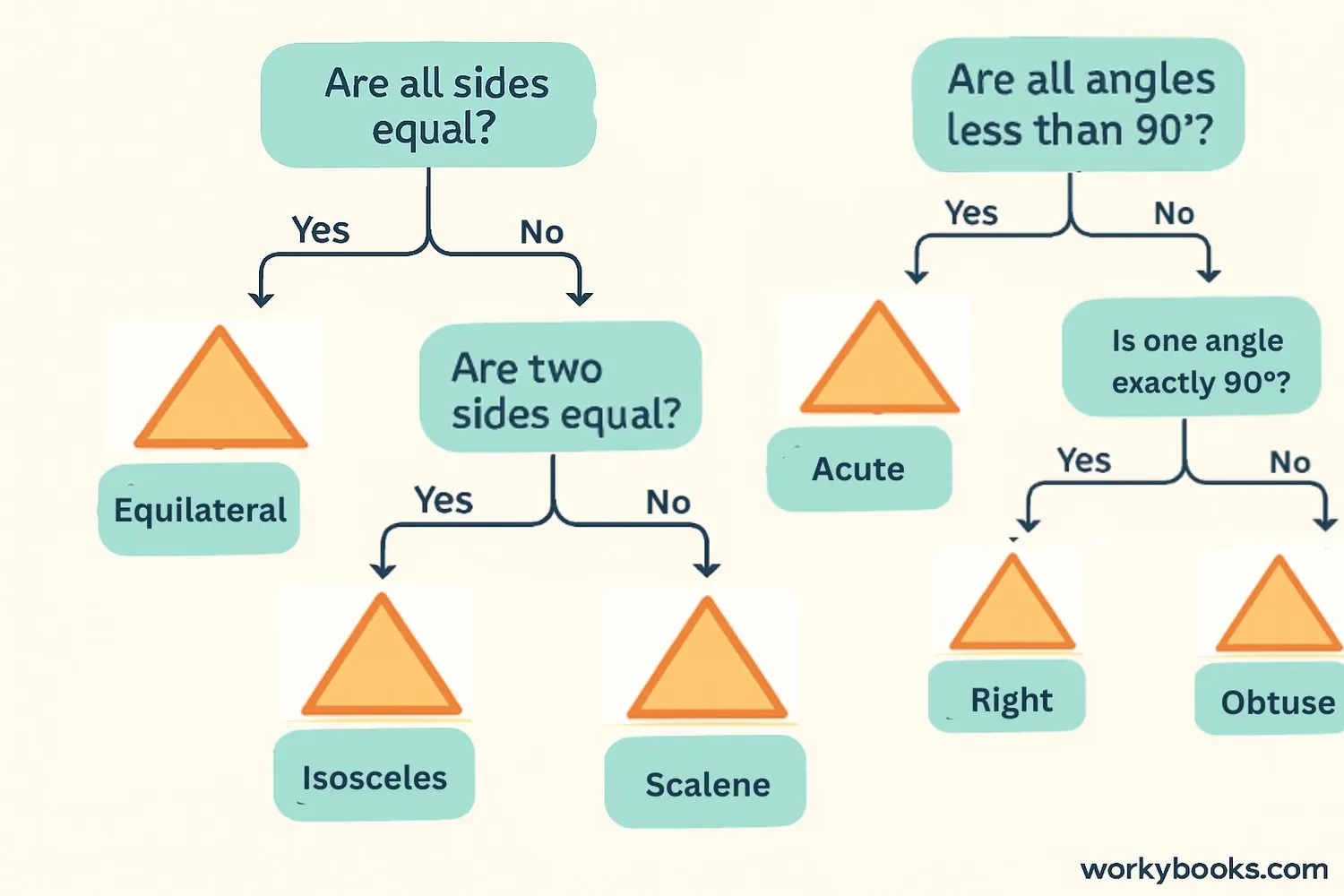
This chart shows how all triangles can be classified based on their sides and angles:
| Classification | Sides | Angles | Example |
|---|---|---|---|
| Equilateral Acute | All sides equal | All angles 60° | ▲ |
| Isosceles Acute | Two sides equal | All angles <90° | ▲ |
| Isosceles Right | Two sides equal | One 90° angle | ▲ |
| Isosceles Obtuse | Two sides equal | One >90° angle | ▲ |
| Scalene Acute | All sides different | All angles <90° | ▲ |
| Scalene Right | All sides different | One 90° angle | ▲ |
| Scalene Obtuse | All sides different | One >90° angle | ▲ |
Chart Tip
Start by looking at the sides - it's often easier to measure sides than angles. Then check the angles.
Triangle Classification Quiz
Test your knowledge with this 5-question quiz. Choose the correct answer for each question.
Frequently Asked Questions
Here are answers to common questions about triangle classification:
Triangle Trivia
Discover interesting facts about triangles:
Ancient Mathematics
The ancient Egyptians used triangles in pyramid construction as early as 2700 BC. They understood the properties of right triangles long before Pythagoras formalized the theorem.
Strongest Shape
Triangles are the strongest geometric shape. That's why you see them in bridges, roof trusses, and towers. They distribute weight evenly and don't deform under pressure.
Navigation Tool
Triangles are used in triangulation, a method for determining locations. GPS systems use triangular relationships between satellites to calculate your position on Earth.
Bermuda Triangle
The famous Bermuda Triangle is an area in the Atlantic Ocean bounded by Miami, Bermuda, and Puerto Rico. Many mysterious disappearances have been reported there.





